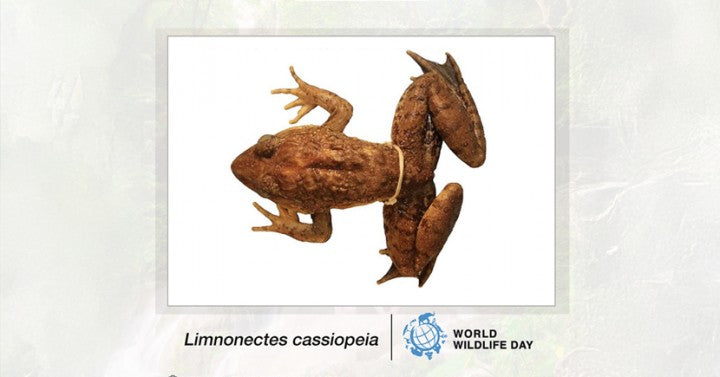
New Species of Fanged Frog Discovered in the Philippines, Recognized by ASEAN Biodiversity Body
A newly discovered species of fanged frog, Limnonectes cassiopeia, has been formally recognized by the ASEAN Centre for Biodiversity (ACB), marking a significant milestone in Southeast Asia’s rich ecological landscape. The announcement, made by the ACB on Wednesday, underscores the Philippines' role as a biodiversity hotspot and highlights the ongoing efforts to document and preserve its unique wildlife.
A Case of Mistaken Identity
For nearly two decades, Limnonectes cassiopeia was thought to be the juvenile form of the well-documented Luzon Giant Fanged Frog. However, recent studies have confirmed that the two are distinct species with notable differences. Researchers examining the amphibian found that while it shares similarities with its larger relative, genetic analysis and morphological distinctions set it apart.
According to experts, fanged frogs are named for their pronounced bony protrusions in the lower jaw, which resemble small fangs. These features are believed to play a role in male-to-male combat, a common behavior among some frog species for territorial dominance or mating rights.
A Remarkable Discovery
The males of Limnonectes cassiopeia have particularly large fangs and disproportionately large heads, some reportedly as big as a chicken’s. These physical traits differentiate them from their previously assumed counterparts and provide new insights into the adaptive evolution of amphibians in the region.
ACB lauded the discovery, emphasizing the importance of biodiversity conservation across ASEAN nations. The organization stated that the identification of new species like Limnonectes cassiopeia reinforces the urgency of habitat preservation and further scientific exploration.
Conservation Implications
Despite its newfound recognition, Limnonectes cassiopeia faces potential threats from deforestation, habitat degradation, and climate change. The Philippines, home to a wide array of endemic species, has been grappling with environmental challenges that put many of its native wildlife at risk.
Scientists and conservationists are calling for increased efforts in ecological protection, sustainable land use, and stronger enforcement of environmental policies to safeguard the habitats of species like Limnonectes cassiopeia.
A Step Forward for Southeast Asian Biodiversity
The discovery of Limnonectes cassiopeia is not just a triumph for Philippine biodiversity but also a reminder of the region’s untapped ecological treasures. As more species await identification, continued research and conservation initiatives remain crucial in ensuring that Southeast Asia’s natural heritage thrives for future generations.
The ASEAN Centre for Biodiversity remains committed to supporting research efforts and fostering regional cooperation in biodiversity conservation, recognizing that every newly discovered species adds to the rich tapestry of life in the region.
